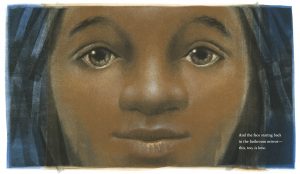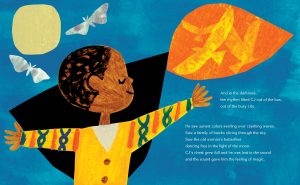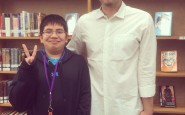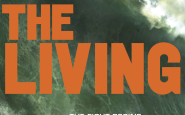Dear Stuck-at-Home Elementary School Students #14
Homebound Letter 14 (The Final One) – June 15, 2020
Dear Stuck-at-Home Elementary School Students:
Congratulations, you made it to the end of the school year!
And what a year it was. A global pandemic forced you out of the classroom and onto a computer screen. For the last three months you’ve done school at the desk in your room. Or at the kitchen table. Or on the front stoop next to your dog. Or even lounging in pajamas on your unmade bed. And it wasn’t easy, was it? Your screen sometimes froze. The background noise coming from other feeds sometimes made it impossible to hear what the heck was going on. Sometimes when you got called on by the teacher you’d launch into a well-thought-out answer only to find out you were still muted and no one heard a word you said.
Somehow, though, you made it through.
And now comes the reward – at least by Coronavirus standards. You officially get to fold up that Zoom screen for a few months. Summer vacation is here. Which means sleeping in. And math-free afternoons. And general relaxation.
And relaxation is a good thing. We all need a little rest and recovery. Especially considering the state of the world right now. But I’m writing this final letter to you with a challenge.
For at least an hour each day, read books featuring black and brown characters. For at least an hour a day, read not just for entertainment (though I’m sure you will be entertained) but to put yourself in the shoes of characters who are worthy of our attention and who are vital to the future of this country. Here’s what I mean . . . .
In one illustration from my picture book LOVE (illustrated by Loren Long), a young person stares directly into the mirror, searching for love in his/her reflection. I believe this is an important stage in any child’s development. If you want to be able to love the world and make your mark in it, you have to first be able to love yourself. But it’s an especially vital developmental stage if you are black or brown. But if you look closely at the picture, you’ll see that this young person is also looking directly at you, the reader, daring you to look away. This young person is searching your eyes, daring you not so see love there.
The fact that this is a brown face is intentional, of course, and was one of the most important statements we wanted to make in the book.
See, traditionally this would be a white face. Which meant young white readers would be able to see themselves. White readers would automatically be able to locate themselves within the story, inside the words that accompany the picture. Which meant that black and brown readers would have to use more imagination in order to step inside the story.
But this is a brown face. This is a brown face because I believe books – especially books for young – can change the way we see the world.
Check out this stunning New Yorker cover by writer/illustrator Kadir Nelson. It’s one of the most powerful images I’ve ever seen. What about you? Do you know who that is? Do you know anything about the smaller faces below? There’s so much we can learn from this piece.
As you probably know, people have been protesting in the streets. They’ve been protesting in Minneapolis, and they’ve been protesting in New York City. They’ve been protesting in Washington DC, and they’ve been protesting in Paris and London and all around the world. Black people are protesting next to Asian people, who are protesting next to white people, who are protesting next to Mexican people. And do you know why we’re all protesting? We’re protesting because our country still doesn’t treat Black citizens the same way it treats white citizens. We’re protesting because the American dream we all learn about in school doesn’t apply to everyone. Not really. And that’s not fair. And if enough people believe something isn’t fair get together, and they organize, change can happen.
But protesting isn’t the only way create change.
Which brings me back to my challenge for you:
If you are black or brown, spend this summer reading books that celebrate who you are. Read books that put your face, your experience, front and center. And when you read these books, when you look at yourself in the mirror, see and feel the love staring back at you. Celebrate who you are. Celebrate where you come from, your family, your roots, your joy.
If you are white, spend this summer reading books that celebrate black and brown folks. Read books that put someone else’s face, someone else’s experience, front and center. And when you read these books, when you peer through these essential literary windows, see and feel the love of your neighbor. Celebrate who they are. Celebrate where they come from, their family, their roots, their joy.
That is my challenge for you this summer. Read books about black characters. Read books written and illustrated by black creators. As many as you can get your hands on. Fiction and nonfiction. Picture books and chapter books. Male and female. Well known books with stickers on the front and books you’ve never heard of.
I’ve compiled a list of picture books from my own collections which I highly recommend, but there are so many other wonderful options beyond what I’m highlighting here . . . .
- Each Kindness by Jacqueline Woodson (illustrated by E.B. Lewis)
- Saturday by Oge Mora
- Thank You Omu by Oge Mora
- Dreamers by Yuyi Morales
- You Matter by Christian Robinson
- The Undefeated by Kwame Alexander (illustrated by Kadir Nelson)
- We Are the Ship by Kadir Nelson
- Heart and Soul by Kadir Nelson
- Trombone Shorty by Troy Andrews (illustrated by Bryan Collier)
- Mufaro’s Beautiful Daughters by John Steptoe
- Don’t Touch My Hair by Sharee Miller
- Mae Among the Stars by Roda Ahmed
- Crown by Derrick Barnes (illustrated by Gordon C. James)
- I Am Every Good Thing (illustrated by Gordon C. James)
- Little Leaders: Bold Women in Black History by Vashti Harrison
- Radiant Child by Javaka Steptoe
- Little Legends: Exceptional Men in Black History by Vashti Harrison and Kwesi Johnson
- Sulwe by Lupita Nyong’o (illustrated by Vashti Harrison)
- Hair Love by Matthew A. Cherry (illustrated by Vashti Harrison)
- Alma by Juana Martinez-Neal
- Pecan Pie Baby Jacqueline Woodson (illustrated by Sophie Blackall)
- New Kid by Jerry Craft
- March (Trilogy) by John Lewis (illustrated by Andrew Aydin)
- Ways to Make Sunshine by Renee Watson
- Clayton Byrd Goes Underground by Rita Williams-Garcia
- Black Brother, Black Brother by Jewell Parker Rhodes
- The Season of Styx Malone by Kekla Magoon
- The Parker Inheritance by Varian Johnson
- Genesis Begins by Alicia D. Williams
- Clean Getaway by Nic Stone
- The Crossover by Kwame Alexander
- Stamped: Racism, Antiracism and You by Ibram X. Kendi and Jason Reynolds
If you believe, like I do, that Black Lives Matter, then you’ll enjoy spending the summer reading stories featuring black characters that are written and/or illustrated by black creators. And if you want to share your progress, send me an email at: hellomattdelapena@gmail.com.
Your friend,
Matt de la Peña
PS – If this is your first time reading one of my letters, my name is Matt de la Peña, and I write books for young people. Usually I’m out on the road, visiting schools. Or I’m working on a new project. But right now I’m staying at home with my family. Like we’re all staying at home. Over the past few months I’ve been writing letters to kids. All my previous letters are collected at mattdelapena.com. If you have a response to this letter (or any of the previous letters) you can send an email to me at: hellomattdelapena@gmail.com.






